Harley 45 Timer And Ignition
Text and Pictures by Mark Trotta
Along with Ironhead and Shovelhead motors, Harley 45 flatheads do not have conventional distributors. What ignites the spark plugs is the ignition coil, which is activated by an ignition timer.
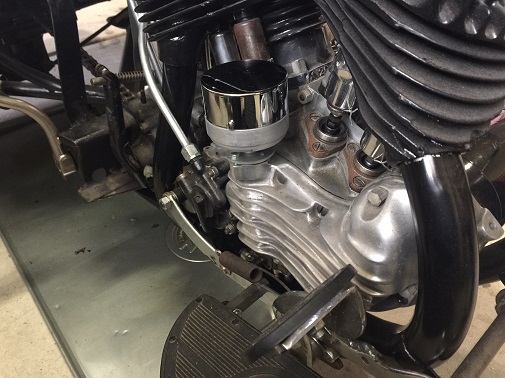
Mounted on top of the cam cover, the ignition timer (also known as a circuit breaker) is simply a vertical shaft in a metal housing that contains a set of points and condenser.
Although they look similar to a distributor, there is no cap or rotor or wires, so it doesn't "distribute" anything.
*********************
Harley 45 Ignition
The ignition timer and coil work in tandem to fire the spark plugs. The timer's function is to signal the coil to fire, which sends spark to the spark plugs through the coil-attached plug wires.
Wasted Spark Ignition
In a wasted spark ignition system, both spark plugs fire simultaneously from the coil. As a spark plug ignites the fuel mixture on one cylinder's compression stroke, the other spark plug fires on the second cylinder's exhaust stroke.
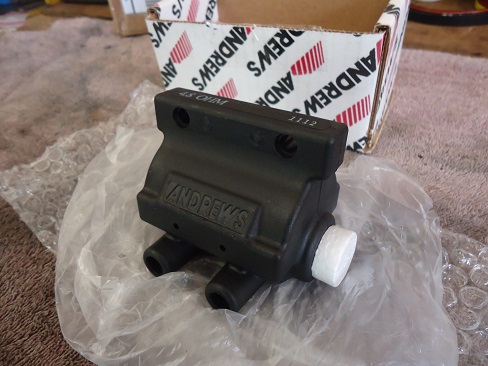
Although wasted spark ignition sounds inefficient, it really isn't. The second spark needs only minimal power to jump across the plug's electrode, so not much power is lost for the other spark. It also eliminates the need for a high-tension distributor, thus reducing parts needed and production costs.
*********************
Harley 45 Magneto
High performance flatheads, like the WR factory racer, were equipped with magneto ignition. Unlike an ignition timer, it doesn't require a coil or battery to produce spark. Instead, spark is created by internal magnets. Magnetos work well at higher speeds but produce weaker spark at low RPMs. This makes Mag-equipped bikes hard to start.
*********************
Harley 45 Timer
Two types of ignition timers were offered on Harley 45 flathead engines. All two-wheeled models and Servi-Cars built before 1964 had mechanical advance timers. Servi models built from 1964 up were fitted with auto advance timers.
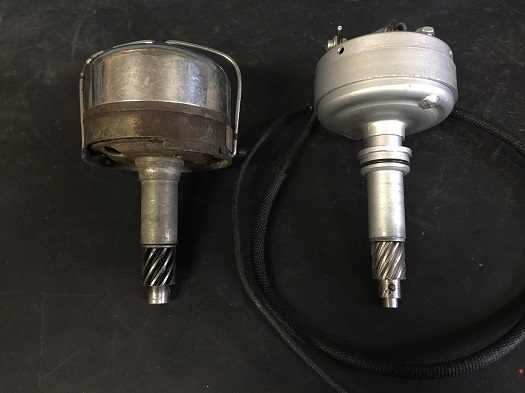
Mechanical Advance Timer
With mechanical advance timers, cold starting was accomplished by moving (retarding) the timing unit, either by twisting the unit by hand or using the spark control grip. Once the engine started and warmed up enough, the unit (or grip) was twisted back inward to it's fully advanced normal running position.
*********************
Spark Control Grip
A second hand grip, opposite the throttle, was known as the "spark control" grip. On a Servi-car, this could be either left-hand or right-hand side. It activated a cable which was attached to the timer assembly.
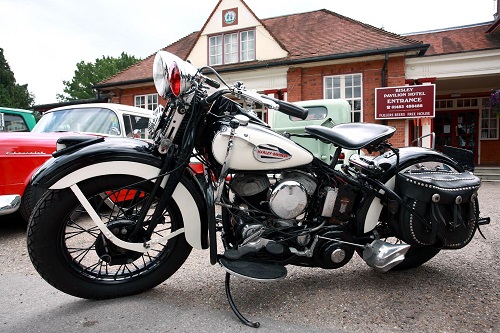
The spark control grip was also used to retard engine timing while under a heavy load, or during acceleration. This was done to avoid engine knock. Many vintage riders simply do away with the cable-activated grip. As long as an external spring is holding the timer in the advance position, you can lean over and physically move the timer with your right hand.
*********************
Auto Advance Timer
In 1964, Servi-cars were upgraded to an auto advance ignition timer. They will retrofit older models.
Underneath the points and condenser base plate is a pair of metal weights with springs. With the motor off or idling, the weights are at rest, and the timer is in the retard position. This helps cold engine starting.
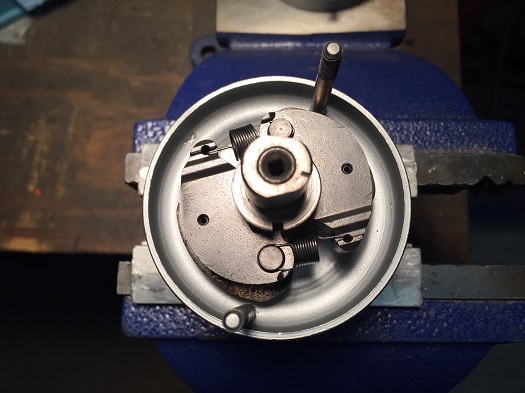
The spring-held advance weights don't move until the motor is off idle, typically around 1500 RPM. Engine speed then forces the weights outward, which causes the timing to advance. When the weights come back to rest, the ignition timer goes back to the retard position.
Replace Mechanical Advance With Auto Advance Timer
Both styles of ignition timers are interchangeable with each other. Auto-advance doesn't make an engine run any better, it just makes it easier to operate. Custom bike builders like them because it's visually cleaner; removing the spark control grip and cable unclutters the handlebar area.
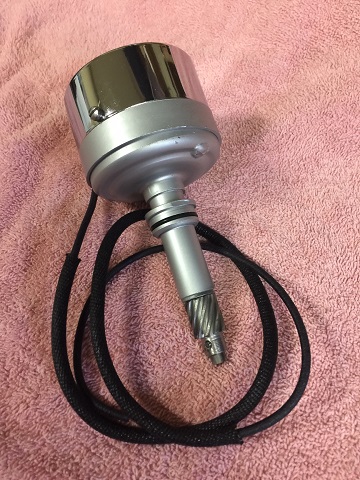
*********************
Setting The Points
Recommended points gap for Harley 45 engines is .020 - .022". Note that there are two different size lobes on the ignition timer cam. The narrower lobe works the front cylinder, and the wider lobe works the rear cylinder.
Points gap should be set before the timer is installed. They are easiest to set when on the wider cam.
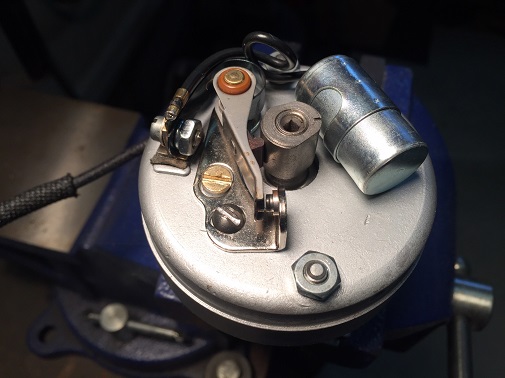
Read: Harley Points And Condenser
On the left side engine case, directly below the engine VIN number, you will find the timing hole plug. Removing the plug reveals the inspection hole. Turn the engine over until you see the vertical timing mark on the flywheel.
*********************
Flywheel Timing Mark
If the motor is in the frame, finding the timing mark is a little harder. Remove the spark plugs so it's easier to spin the motor. If you can scrounge up a helper, have them watch for the timing mark through the inspection hole while you kick the motor over slowly.
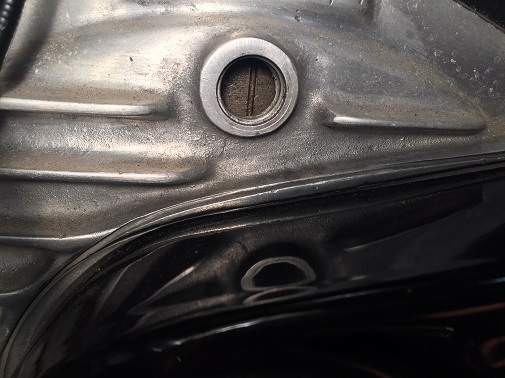
Stop when the timing mark is centered in the hole. Remember that mark on the flywheel is only a reference point. The exact spot where the correct timing occurs is when both front tappets are closed, and the front cylinder is on the compression stroke.
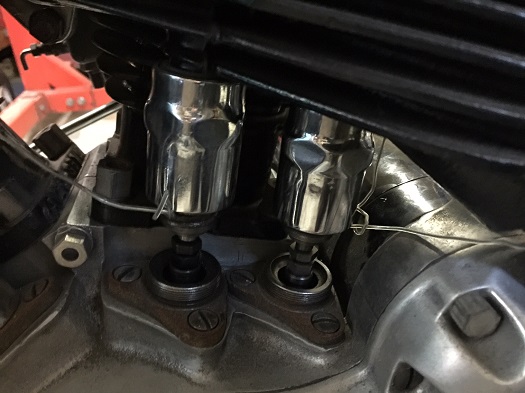
To see where the valves are, prop up the front valve spring covers and watch the tappets move. Both front tappets close just after the front intake valve closes.
If you need to turn the flywheel back, you can lift up the rear wheel, put the motor in gear, and move the wheel by hand. Or you could put the bike in gear and roll it (forward or back) a few inches.
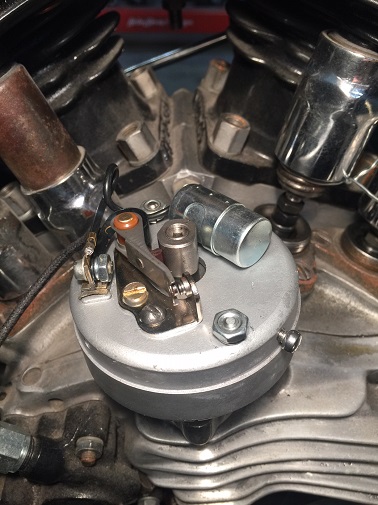
Once you're at the timing mark, the timer can be installed. There is either a flat base gasket or an O-ring. Later models from 1966 up had the O-ring.
Line Up The Marks
Before putting the shaft in the cover, notice the small mark on the top of the timer cam. Line up this mark with the breaker lever fiber (center of the points bracket). Install the shaft in the cam cover.
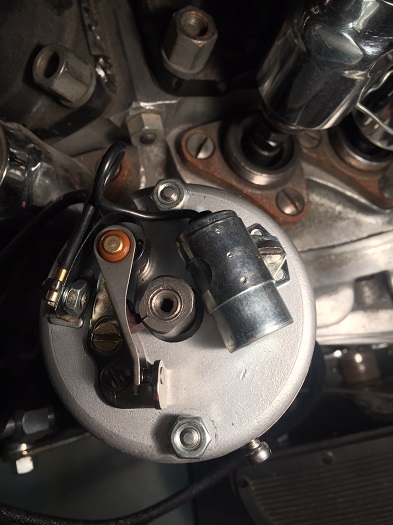
If the two marks don't line up on the first install, pull the timer up just enough so you can turn the shaft gear one tooth over (CCW) and try it again. You may have to do this several times before the correct alignment is attained. When correctly installed, the coil wire should be facing back or towards the motor.
*********************
Harley 45 Spark Plugs
Recommended spark plugs for 45 flatheads with battery ignition is Harley-Davidson #3 or equivalent. Recommended spark plug gap is 025"-030".
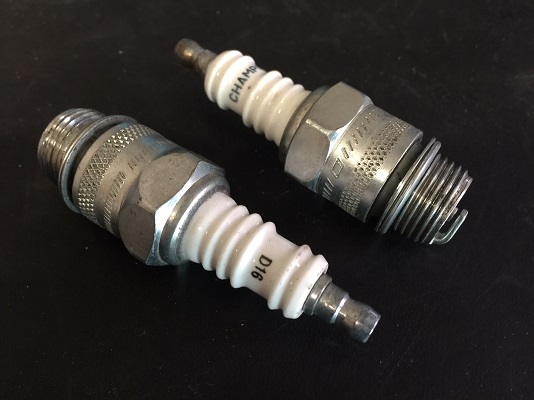
My 1961 Servi-Car is presently running Champion D16 plugs which are still readily available. These are the big plugs that take an 18mm wrench size. The stocking number for these plugs is Champion 516.
(Note: If you follow the above link to Amazon, the picture is wrong but what's being sold are Champion D16 spark plugs)
*********************
Notes and Misc
Timer cams should be lightly lubricated (not over-lubricated) with a drop or two of grease.

Servi-car auto timers (1964-1973) have a total of 30 degrees of advance.
*********************
Related Articles: